Recap: Slavery in Motion at the Baltimore Museum of Art
The poignant event featured historians and artists in conversation about motion, emotion, memory, and grief.
Remains // An Archive is a seed lab and former microlab in the Diaspora Solidarities Lab, a par tof the LifexCode: Digital Humanities Against Enclosure ecosystem. Read on for a recap of their transcendent event Slavery in Motion at the Baltimore Museum of Art.
On January 16, 2025, the Remains // An Archive micro lab gathered at the Baltimore Museum of Art for “Slavery in Motion,” a live discussion about the multimedia art collection and collaboration of the same name featuring original works by artists Romaine McNeil, Julia Mallory, Sha-Shonna Rogers, and Tatiana Esh.
In person, and also streamed online, “Slavery in Motion” was free and open to the public. Remains members and Diaspora Solidarities Lab Solidarity fellows Kevin Ah-Sen (Ph.D. Candidate in Faculty of Education, McGill University) and Samantha Stephens (Ph.D. Candidate in English, University of Virginia) interviewed each of the four artists of the collection, along with DSL Solidarity Fellow and Remains co-lead Jessica A. Newby (Ph.D. Candidate in History, The Johns Hopkins University), whose dissertation research initially spurred the project and collaboration.
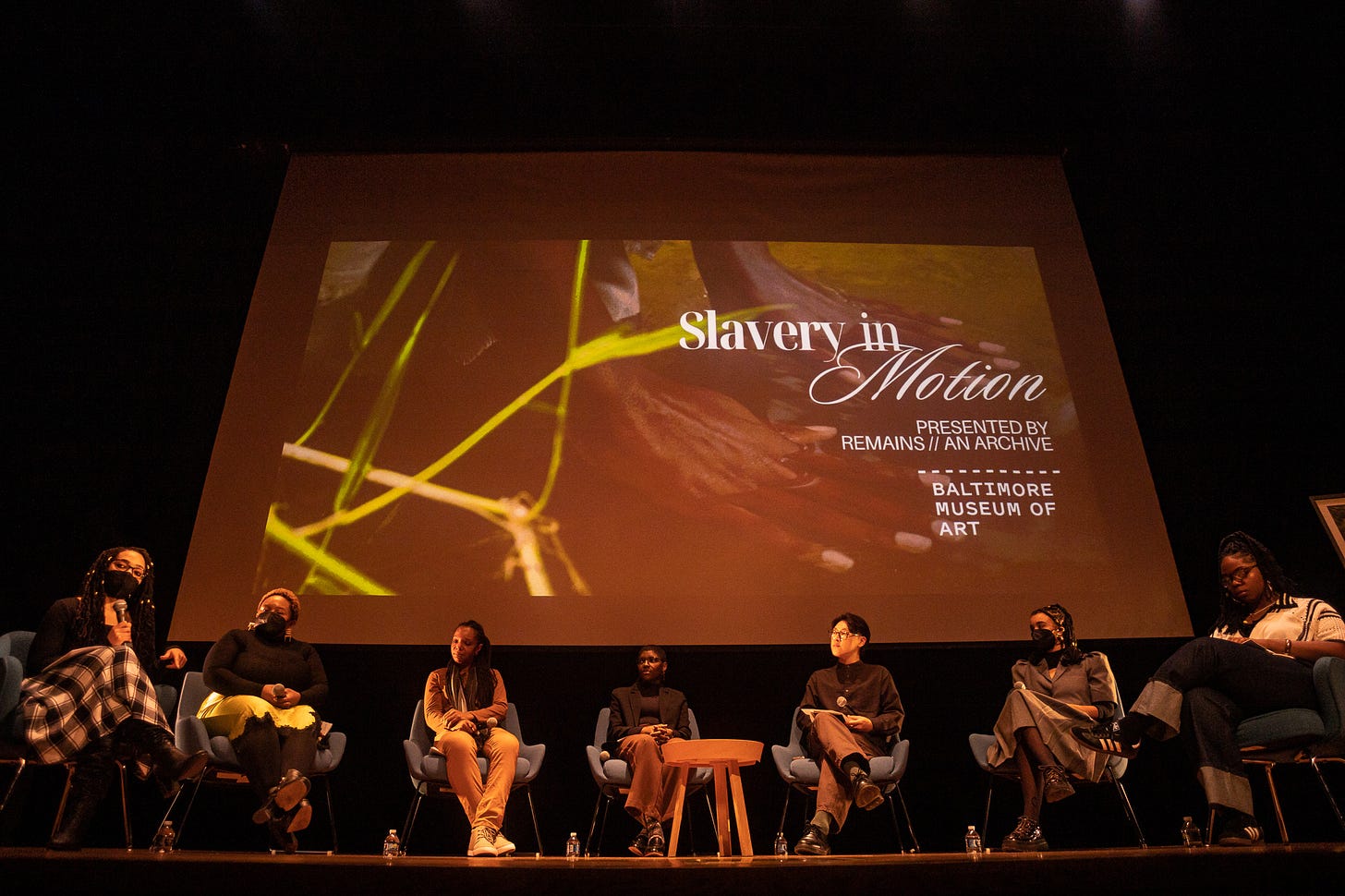
“Slavery in Motion” is inspired by the story and experiences of an African young woman named Molia who was enslaved in Westmoreland Parish, Jamaica as a field hand from 1761 to 1774. Jamaica was the largest, most prosperous, but also one of the most perilous of Great Britain’s plantation clines in the eighteenth century. Over the course of her thirteen years in Jamaica, Molia was subjected to excruciating labor regimes that posed numerous hazards to her health, food scarcity and deprivation, and extreme physical and sexual violence from her white enslavers. During that time she also became the mother of one surviving child, a daughter named Silvia. Silvia died at just fifteen months old. In the wake of this tragic loss, Molia ran away from her owner no less than fourteen times. Following the fourteenth recorded escape and recapture, Molia was sold to a trader who then took her away from Jamaica and to Savannah, Georgia.
The “Slavery in Motion” installation made its original debut in the fall of 2024 as a part of the Coastal Relations: Enacting Diaspora exhibitions curated by Dr. Mary Pena (Dartmouth College) and Kevin Ah-Sen at The Avery Research Center for African American History in Charleston, SC from August 2024 to January 2025. Each one of the pieces in the “Slavery in Motion” art collection conveys a specific aspect/theme of Molia’s life through a variety of visual, abstract, and sonic mediums that memorialize her and Silvia’s story. During the discussion at the BMA, each of the artists were able to share their artworks with the general public, discussing the personal connections they made with Molia’s story, and also reflecting with Jessica upon their individual and collective collaborations which unfolded over the course of 1.5 years.

Among the topics during the live discussion was the theme and significance of Motion that was not only consistent across Molia’s life, but also allowed for the enactment of different methods of historical inquiry in retelling her story, and was also common across each one of the four art pieces.
“Motion was both a figurative and literal theme of her [Molia’s] life that made me see her in a way that I didn't see her represented within the existing historical writings on her life,” Jessica explained. Whether in moments of forced motion that Malia experienced from her labors, or in voluntary moments she made herself during fugitivity, “Motion was a way of seeing what at first I thought wasn't there in the first place.”
In reflecting upon the concept/theme of motion, artist and poet Julia Mallory introduced emotion into the discussion: “I’m obsessed now with just really understanding the way that the world…tries to suppress and deny Black emotion. And so this project just really opens that up for me. Also, motion in a modern sense of, like the slang term where people like, have motion …“How is this story continuing to move throughout each of us?... Even on the spirit side of things: How are Molia and Silvia, how are their spirits still moving or making magic in motion from, from a different realm?” Julia’s contributions to the collection were “The Mighty Molia,” a series of several written poems that she coined as haijus that were also accompanied by audio recordings with professional operatic soprano Chantal Braziel.
“How is this story continuing to move throughout each of us?... Even on the spirit side of things: How are Molia and Silvia, how are their spirits still moving or making magic in motion from, from a different realm?” - Julia Mallory
“Movement is infectious,” Romaine McNeil added. “I think it creates a ripple effect, and it just doesn't stay with her. Motion tends to do that. It's breaking barriers and building bridges. It's not stagnation. One of the things that's really profound about Molia is that she was hell-bent on doing this in her motion…she's using that to create force. And I think that's just beautiful when you think about motion and emotion in that way.” Romaine’s piece is an oil and acrylics painting entitled “Freedom in Becoming.”
Artist Tatiana Esh used pen, ink, watercolor, marker and colored pencil to create her piece, “Hide & Seek.” During the discussion, she identified and reflected upon a recurring theme of motion between Molia and other enslaved women in Westmoreland that would go on to facilitate/hold significant implications for her instance of fugitivity, “ [I’m] just thinking about how other enslaved women were helping protect and support each other. Another time that she had escaped right after Silvia had passed away, she made it all the way to the opposite side of the parish where she was found at the same pen or plantation with her shipmate, one of the individuals that she had come across the ocean with. And I don't think she had seen her in two years. And so [I’m] even thinking about how word of mouth spreads and works and how they were able to create these networks in order to make all of this possible.”
“When I hear motion, the first thing I think I'm thinking of is like, as a filmmaker, motion picture,” said Artist and New Generation Scholar Sha-Shonna Rogers. “I've been thinking about that a lot as an emerging filmmaker to make sure my work is doing my people justice all the time. I’m thinking about Molia and the power within being able to create a film around a woman whose story wasn't told…it's so beautiful to have a group of artists to bring this story to fruition. And that's the power of motion, the movement of art and the intention behind it.” Sha-Shonna created two pieces for the collection: “Molia’s Extension,” a short film dedicated to Molia and Silvia, as well as a digital photograph/screenshot from the same film that would go on to be featured in many of the public advertisements for the Slavery in Motion collection and public event at the BMA.
“I’m thinking about Molia and the power within being able to create a film around a woman whose story wasn't told…it's so beautiful to have a group of artists to bring this story to fruition. And that's the power of motion, the movement of art and the intention behind it.” -Sha-Shonna Rogers
At the conclusion of the evening’s discussion, Remains director and Associate Professor of History Dr. Jessica Marie Johnson delivered closing remarks in a poignant letter to Molia, and a broader reflection on the importance of histories of slavery in these current times, “I am a historian of slavery because I truly believe that the history of slavery is meant to radicalize us. It is not a story of shame. The shame is not mine. It is not a story of despair solely… And I think we see it in this art. It's a story that we will need to learn from and be even more deeply attuned to in the coming days, in the coming weeks, in the coming months, in the coming years....That is our practice and that is our privilege. We do not have the luxury of turning away.”
“We do not have the luxury of turning away.” - Dr. Jessica Johnson
Remains // an Archive extends its heartfelt thanks and gratitude to the artists of the Slavery in Motion collection, and to all of the amazing people at the Baltimore Museum of Art who helped bring the “Slavery in Motion” into fruition: Tracey Beale, Anja Xheka, Faith McCorkle, and Natasha Tylea. They extend their gratitude to Mera’s Kitchen, Sounds of Seven, and Christina Arias- Randolph for providing the catering, music and photography for the event reception, respectively. They are also immensely grateful to all of the following sponsors who contributed to the beautiful success of the event: the Diaspora Solidarities Lab, LifexCode: Digital Humanities Against Enclosure, The Johns Hopkins University Center for Africana Studies; The Program for the Study of Women, Gender, and Sexuality; The Billie Holiday Center for Liberation Arts (Inheritance Baltimore); The Program in Latin American, Caribbean, and Latinx Studies; The Zanvyl Krieger School of Arts and Sciences at JHU ; the University of Maryland Department of African American and Africana Studies through the generosity and support of the Mellon Foundation's grant, The Past and Future of Black Studies; with additional support from and Eindevr | Data Science for the Digital Humanities.





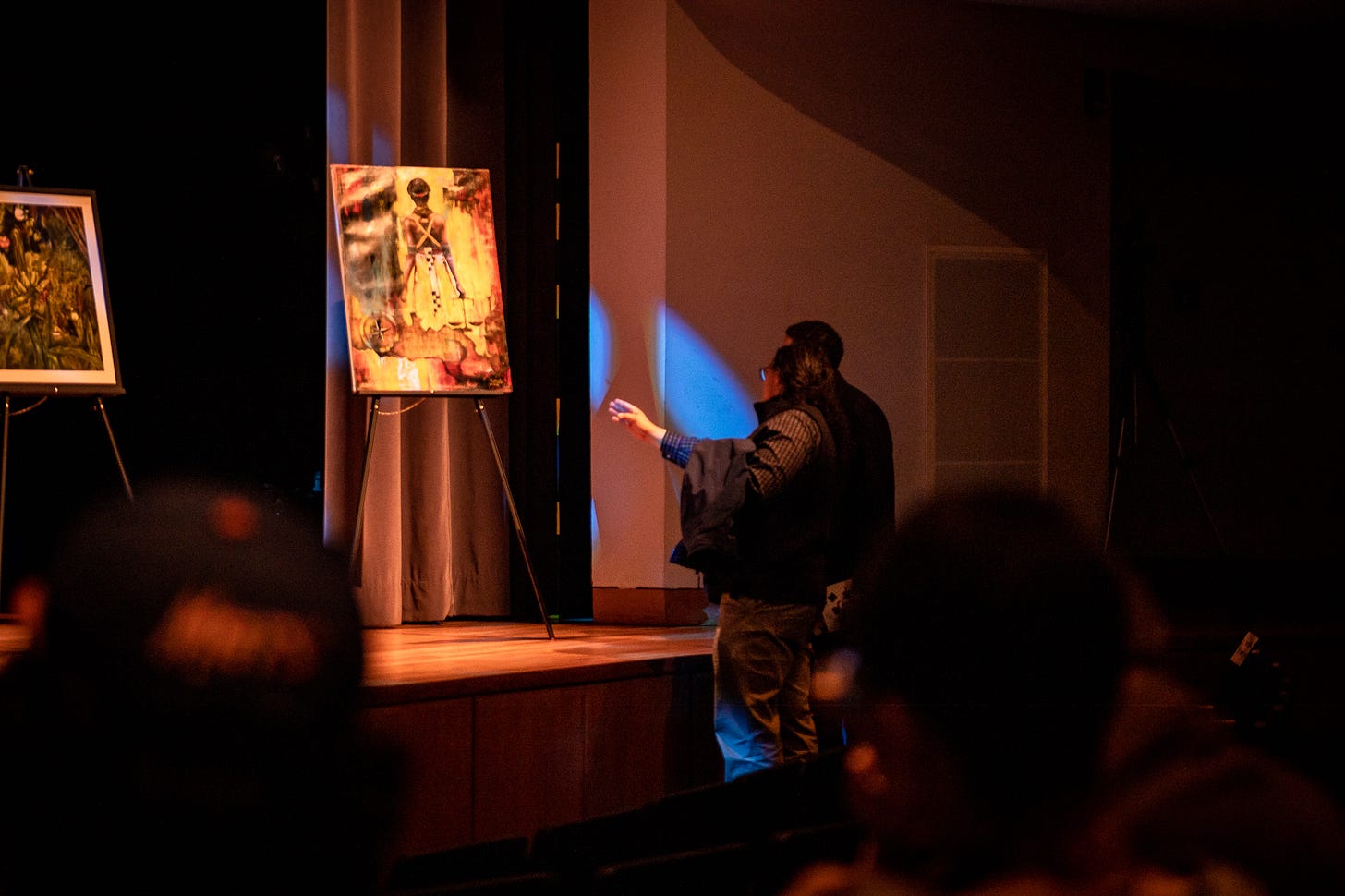

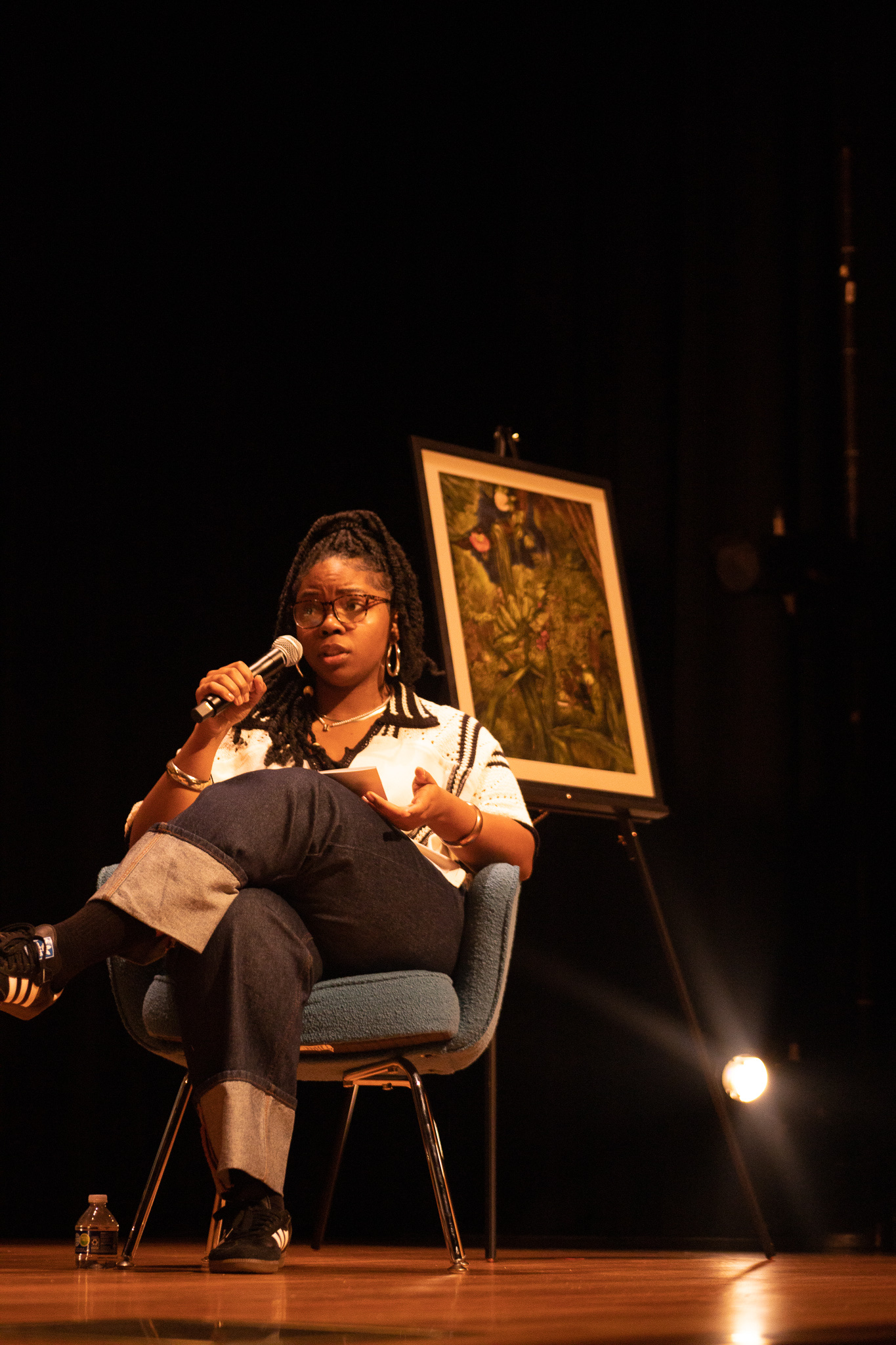
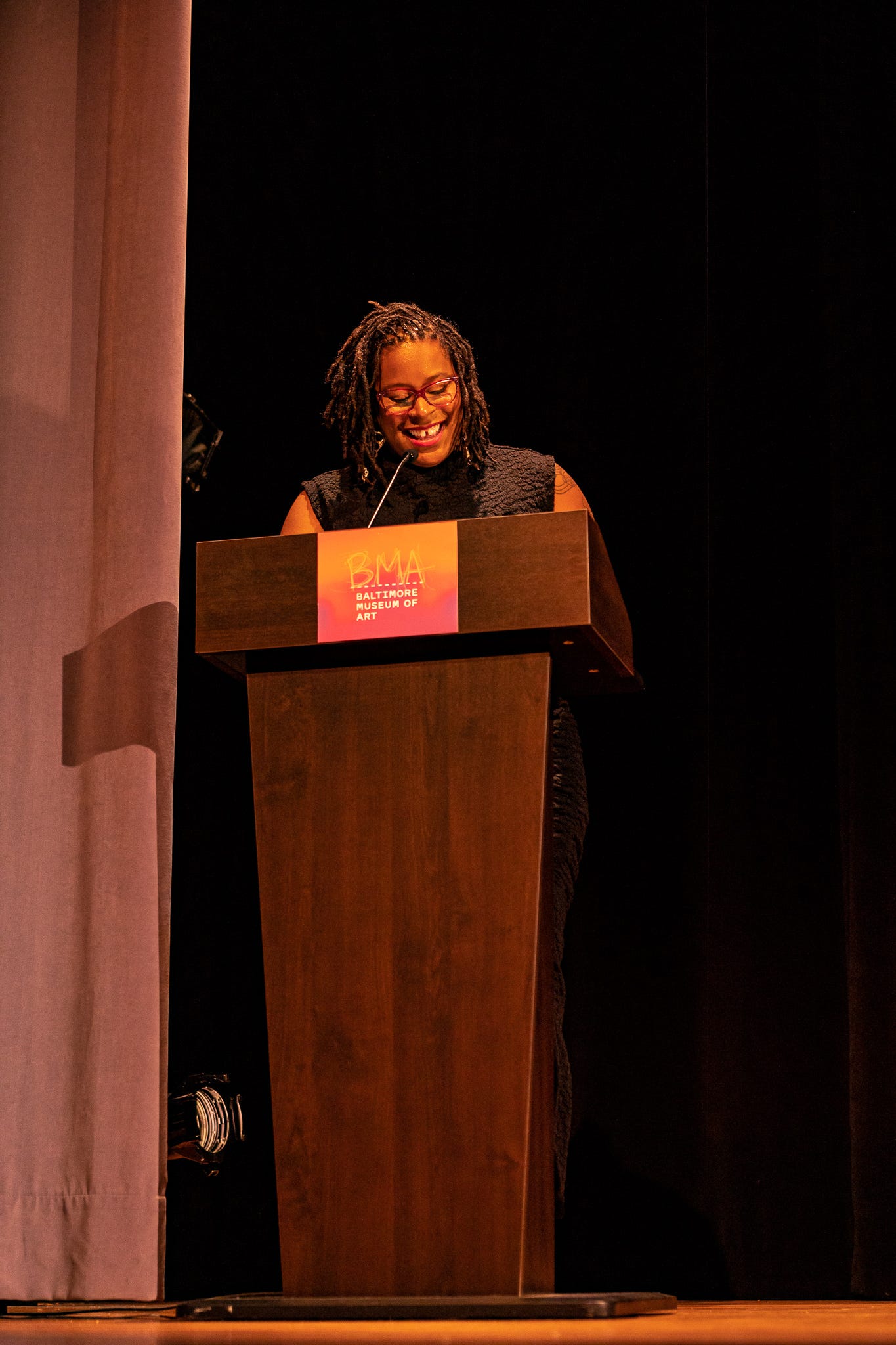
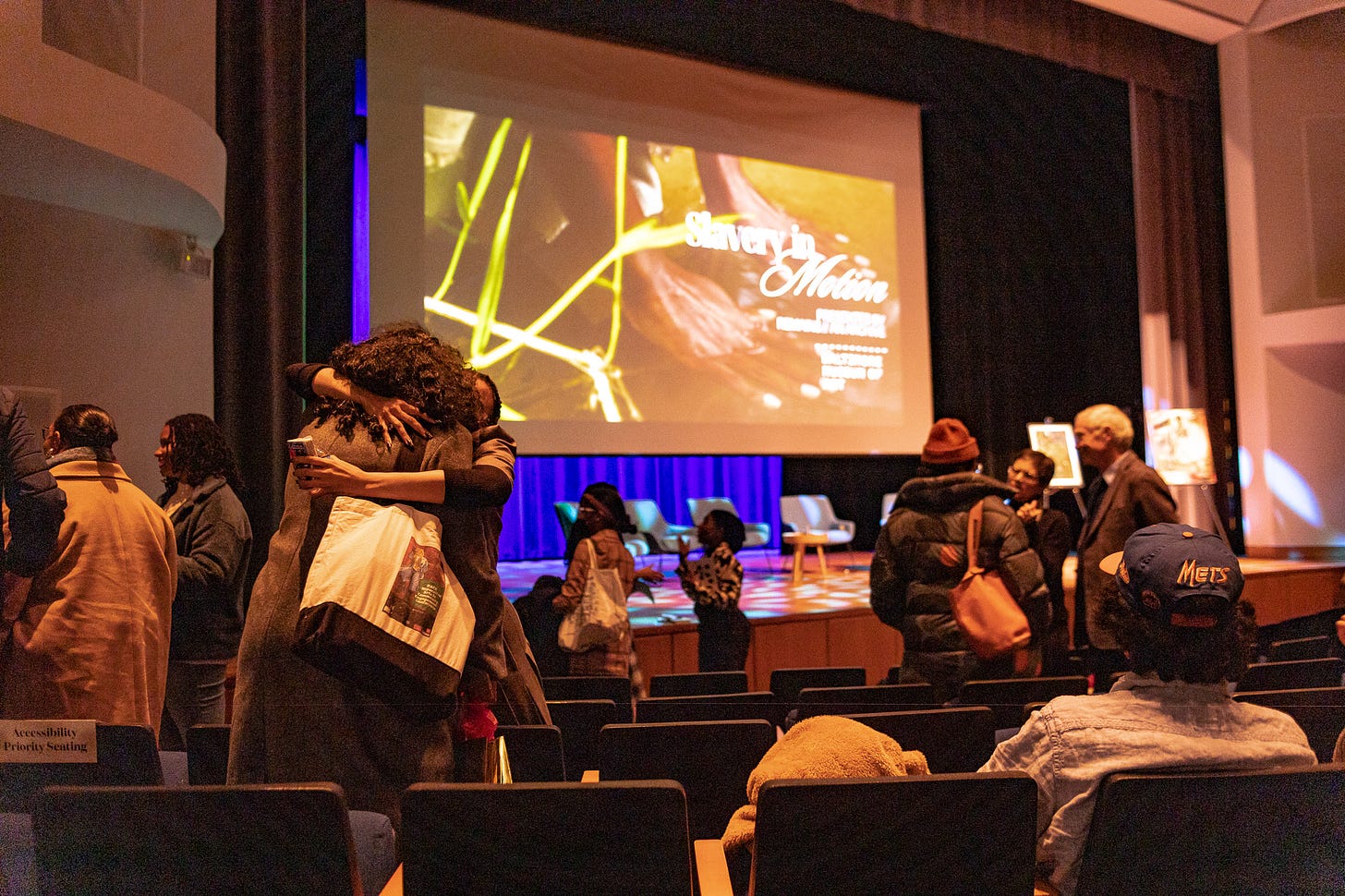

Recap written by Jessica Newby and photographs by Christina Arias-Randolph!